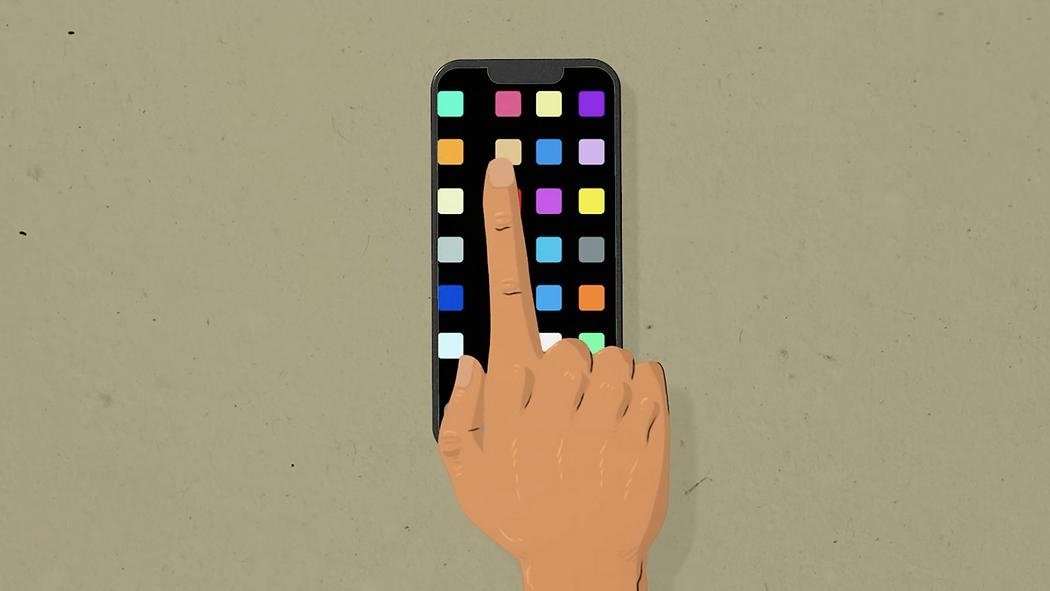In 2010, South Korea experienced a particularly severe winter. People couldn't use them cell phones them while wearing gloves, so they started using sausages as a result of which one company saw a 40% increase in the sale of sausages.

What can sausages do that gloves can't? In other words, how do the displays touch?
Charles Wallace and Sajan Saini break down the science behind touchscreens.
Transcript
In 2010, South Korea experienced a particularly severe winter. People couldn't use their cell phones with gloves on, so they started using sausages, resulting in one company seeing a 40% increase in sausage sales. So what could sausages do as opposed to gloves? In other words, how do touchscreens actually work?
In 1965 the first touch screen was invented to help British air traffic controllers with flight plans. However, this technology was cumbersome and expensive for widespread use. Over the next few decades, engineers further developed this technology and experimented with alternative types of touch screens. Soon, resistive touch screens flooded the market. But then, in 2007 Apple released the first iPhone. It was quite innovative but, again, it used the same principle as the first touch screen: that of capacitance. Now, capacitive and resistive touch screens are the two more common species.
They use an external power supply for the electrical circuit. In conductive materials, electrons flow around the atoms, producing an electric current. Unlike insulators, electrons in conductors are weakly bound and flow easily.
A resistive screen has two layers. The top is a clear, flexible material, usually plastic, ενώ το από κάτω είναι κάτι δύσκαμπτο, όπως το γυαλί. Τα δύο στρώματα είναι καλυμμένα με μία αγώγιμη ουσία, και διαχωρίζονται από ένα λεπτό κενό. Με την κατάλληλη πίεση, τα στρώματα συνδέονται, ολοκληρώνοντας το ηλεκτρικό κύκλωμα. Αυτό προκαλεί μία αλλαγή στην τάση στην οποία αντιδράει το λογισμικό. Οι αντιστασιακές οθόνες μπορεί να μην ανταποκρίνονται πάντα, αλλά γενικά είναι φθηνές και ανθεκτικές, οπότε προορίζονται για βιομηχανική και γενική χρήση. Η πλειοψηφία των οθονών αφής που παρήχθησαν το 2007 ήταν αντιστασιακές. Αλλά στα χρόνια μετά την κυκλοφορία του iPhone, έγιναν κατά βάση χωρητικές.
Models vary, but today's cell phone screens consist of a protective and insulating glass on the outside and an LCD screen underneath that produces the images you see. Between the glass casing and the LCD screen are several layers. One is surrounded by rows of a transparent, conductive material carrying an alternating electrical circuit. A thin insulating layer separates these conductive lines from others, which are arranged in columns. On top of each other, the lines form a grid. The points where they intersect are called nodes. The cell phone battery attracts electrons to the first layer of lines, and some electrons gather at each node, creating a small electric field. These screens are called capacitive touch screens, because the nodes behave as capacitors by storing charge.
They are generally easier to use than resistive screens because they interact directly with the finger without the need for pressure. Your body is a good conductor and is constantly transmitting electrical circuits. Why; Because you are almost 60% water. While chemically pure water is considered an insulator, most is adulterated. The water inside you is charged with ions, atoms or molecules that have a weak electrical charge. So when you select an app, the finger acts as a third line. It interacts with the existing electric field causing a weak electrical circuit to circulate through your finger and eventually back to the phone. This changes the amount of load on the affected nodes. And the voltage readings on the second layer of lines tell the microprocessor which point of it screen is touched.
However, if you use the mobile phone with wet hands or with gloves, you will probably have a hard time. Both prevent electrical contact between the finger and the cell phone. If water falls on the screen, it can trigger multiple nodes and the mobile will behave as if it is being touched in multiple places at once. On the other hand, gloves are insulators, so the charge can't go anywhere. Meanwhile, objects that conduct electricity as well as a finger, such as banana peels and certain processed meats, can activate the screen, a knowledge that can come in handy when you need it.





